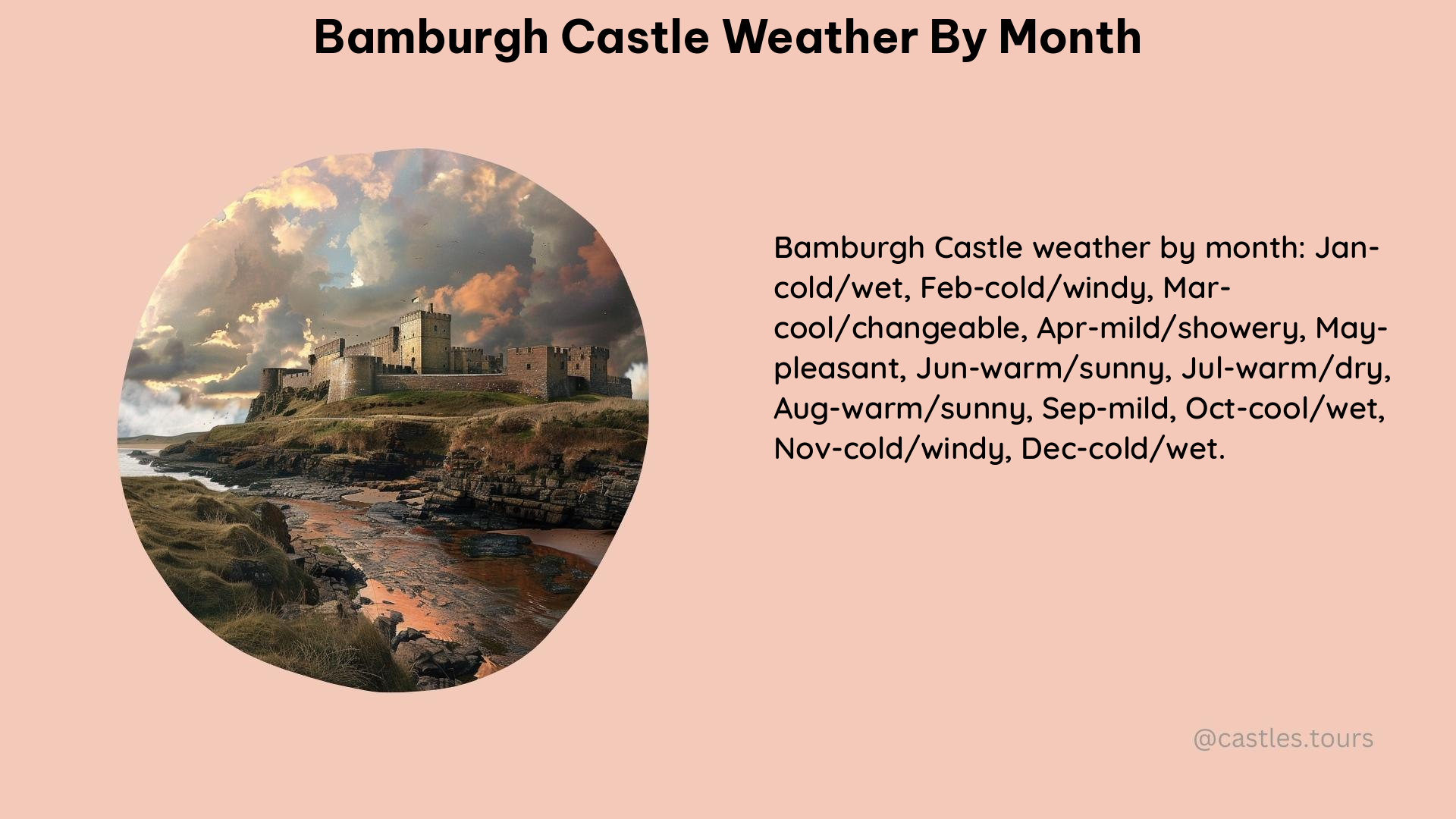Bamburgh Castle, a stunning medieval fortress located in Northumberland, England, is a popular destination for beach enthusiasts and history buffs alike. Understanding the weather patterns throughout the year is crucial for planning the perfect visit. In this comprehensive guide, we’ll explore the Bamburgh Castle weather by month, providing you with the information you need to make the most of your trip.
Bamburgh Castle Weather By Month
January
The average high temperature in Bamburgh Castle during January is around 7°C (45°F), with lows around 1°C (34°F). The average rainfall is approximately 55mm (2.2 inches), making it one of the wetter months of the year.
February
February in Bamburgh Castle is similar to January, with average high temperatures around 7°C (45°F) and lows around 1°C (34°F). The average rainfall is slightly lower at around 45mm (1.8 inches).
March
As spring approaches, the average high temperature in Bamburgh Castle rises to around 9°C (48°F), with lows around 3°C (37°F). The average rainfall remains consistent at around 45mm (1.8 inches).
April
April brings a noticeable increase in temperature, with average highs around 11°C (52°F) and lows around 5°C (41°F). The average rainfall remains the same as the previous months at around 45mm (1.8 inches).
May
May is a pleasant time to visit Bamburgh Castle, with average high temperatures around 14°C (57°F) and lows around 7°C (45°F). The average rainfall is also consistent at around 45mm (1.8 inches).
June
Summer arrives in Bamburgh Castle, with average high temperatures around 17°C (63°F) and lows around 10°C (50°F). The average rainfall increases slightly to around 50mm (2 inches).
July
July is the warmest month in Bamburgh Castle, with average high temperatures around 19°C (66°F) and lows around 13°C (55°F). The average rainfall remains at around 50mm (2 inches).
August
August maintains the same average high and low temperatures as July, with highs around 19°C (66°F) and lows around 13°C (55°F). The average rainfall increases to around 60mm (2.4 inches).
September
As autumn approaches, the average high temperature in Bamburgh Castle decreases to around 17°C (63°F), with lows around 11°C (52°F). The average rainfall remains at around 60mm (2.4 inches).
October
October brings a more noticeable drop in temperature, with average highs around 13°C (55°F) and lows around 7°C (45°F). The average rainfall remains consistent at around 60mm (2.4 inches).
November
November sees further cooling, with average high temperatures around 9°C (48°F) and lows around 4°C (39°F). The average rainfall is also around 60mm (2.4 inches).
December
The winter season returns to Bamburgh Castle, with average high temperatures around 7°C (45°F) and lows around 2°C (36°F). The average rainfall is around 60mm (2.4 inches).
It’s important to note that these are average weather conditions, and actual weather may vary. It’s always a good idea to check the latest weather forecasts before planning your visit to Bamburgh Castle.
Conclusion

Bamburgh Castle’s temperate maritime climate offers a diverse range of weather conditions throughout the year, making it a versatile destination for beach enthusiasts and touring enthusiasts alike. By understanding the weather patterns by month, you can plan your visit to Bamburgh Castle and make the most of your time exploring this stunning coastal gem.
References:
– WeatherSpark
– Weather.com
– AccuWeather
– Climate-Data.org
– Weather2Travel.com
